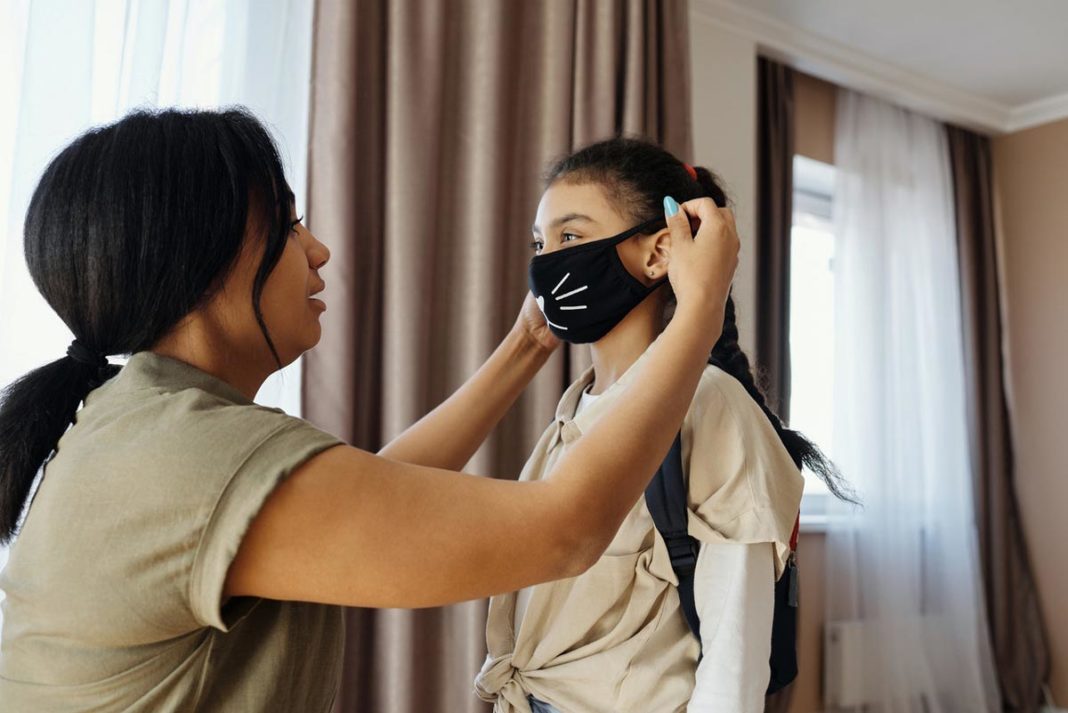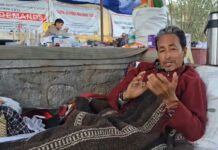In the last one-and-a-half years, the scourge of COVID-19 has continued relentlessly across the world and displays no signs of abating. Till about the beginning of April 2021, India was assured in its fight against coronavirus as the number of cases had declined from September 2020 to mid-February 2021. Many foreign experts too were saying as to how the country kept itself safe during the second wave in September-October 2020 when the virus was ravaging the U.S.A., U.K. and the European Union. But it is now apparent that we ignored the capacity of this virus, with its origin in China, for mutating as per conditions. The government and scientific community did not expect a second wave, or a wave of this magnitude, as the first wave was a one-year affair.
In the case of this pandemic, there have been periods of surge in nearly every region of the world, followed by a relative lull. India too did not escape the pattern and in the country so far, there have been two very distinct periods of surge, separated by a prolonged lull. It took six months to reach the peak and six months to decline to steady and low numbers. From December 27 till March 11, the daily numbers were around 20,000 and that pattern was assumed to continue. The picture changed drastically when we began to record a dramatic increase in new cases from April 15 onward, with more than 200,000 cases daily. With 4, 08,323 new COVID-19 cases recorded on April 30, India became the first country in the world to register over 4 lakh infections in a single day. In this month, the country reported the most deaths after Brazil and the European Union (EU).
May began ominously as in the first ten days, the country reported nearly 40,000 COVID-19 deaths, roughly accounting for a third of deaths worldwide during this period. More than 4.14 lakh cases were recorded on May 6. After that, India has witnessed a steady decline in the detection of new cases and on 20 May, 76,070 new Covid-19 cases were reported; on 24 May, the tally further dipped to 223,601 new cases while on 25 May, the single-day rise came down to a total of 1, 96,427 new infections, the lowest in around 41 days, according to the updated Union Health Ministry data.
So far, May has been the deadliest month of the pandemic for India as the month has already recorded the deaths of nearly 92,000 people so far, almost twice the number for April. And there is still a week to go. Till now, the countrywide death toll due to Covid-19 stands at around 3.07 lakh. The country now has the world’s third-largest death count, just behind the U.S.A. with over 5.84 recorded deaths, and Brazil, with around 4.48 lakh deaths. India now accounts for 16% of the global confirmed cases, and 9% of global deaths.
The third wave currently under discussion refers to a possible surge in cases at the national level. The national curve seems to have entered a declining phase now. In the last two weeks, the daily case count has dropped to about 2 lakh from the peak of 4.14 lakh, while the active cases have come down to 32.25 lakh, after touching a high of 37.45 lakh. If current trends continue, it is expected that by July, India would reach the same level of case counts as in February.
For the country, the second wave has been catastrophic, which has claimed far more lives each day than in any period in 2020. This far deadlier second wave in India has been widely attributed to the B.1.1.7 variant—first identified in the U.K. Another possible culprit is a homegrown variant, called B.1.617, first found in California with two worrying mutations. This variant has been spreading the fastest in the country and has severely tested the capacity of our healthcare system, our administration and our resolve to take decisive steps.
While in the first wave, we saw the heart-rending pictures of migrant workers walking their way home in the countryside, we are now witnessing videos of people running helter-skelter searching for life-saving medicines and oxygen for their near and dear ones. Figures inform us that that most large countries have been hit by two waves of infections already. For example, the first wave hit the U.S.A. in July-August 2020 while the second one visited its shores in December. Great Britain was hit in November 2020 and January 2021.
Having failed to gauge the speed of coronavirus infections, we did not adequately prepare for it. Now the question arises as to what India should do, in the changed scenario, to properly tackle and defeat corona. Let’s ponder over and explore some possibilities, suggestions here:
1. Invest Heavily Into Data Backed Decisions
First of all, we have to invest heavily into taking data-based decisions on corona infections. We have to collate data from the farthest corners of the country and take correct decisions on the basis of trends detected therein. Presently, people are scouring the Internet media for any information on medicines and equipment. It is not proper since it is leading to panic, tumult and chaos. Such information should be disseminated through the government. We have to use artificial intelligence for our decisions so that human errors and consequent delay can be done away with. Corona’s second wave has taught us that even a delay of an hour matters a lot and a delay of one day means the loss of hundreds of lives.
2. Dependence Solely On Herd Immunity To Be Lowered
Second, we now know that herd immunity is not the correct way to counter this scourge. As Nsikan Akpan wrote in National Geographic magazine,” A natural ‘herd mentality’ can’t stop the COVID-19 pandemic.” We have evidence that only a vaccine, with good enough efficacy, helps to counter infectious disease. Till now, only two infectious diseases, the human scourge of smallpox and the cattle-borne germ rinderpest, have ever been eradicated. All other known afflictions such as leprosy, rabies and bubonic plague have either been managed through human intervention or remain uncontrolled. Vaccination has helped Israel and U.S.A. to attain a good enough target and relax the strict guidelines of masking and social distancing. Israel also attained the target of zero death in a single day in the last week of April 2021. This demonstrates that vaccination is effective but only if given to a large part of the population.
India has vaccinated around 16 per cent of its population with at least one dose of the vaccine. Rather than picking up pace, the rate of vaccination has come down from a peak of more than four million doses per day in mid-April to a little more than one million in mid-May. This has happened in the middle of vaccine shortages, amid a surge in cases that has people wary of going out to vaccination centres, and during state lockdowns that make access to vaccination centres limited.
Also Read:
We have to prepare a better blueprint for vaccination and have to include retired doctors and the armed forces in it. We have to keep our eyes wide open in the manufacturing of such medicines which help in preventing the fast spread of infection. Several Indian companies are working on many vaccines and medicines. The need of the hour is constant help and encouragement from the government.
Unlike many rich countries of the world, India committed a mistake by not investing in vaccine research. Now, we have to manage our investment in such a way that we benefit from the research immediately.
3. Fighting Corona Akin To Fighting A War
Third, the last one-and-a-half years have informed us that a corona like pandemic cannot be fought like any other disease. It is more akin to fighting a war that requires tremendous speed and coordination. To tackle infectious diseases, the country has to set up a separate department with a mission mode. This cannot merely remain limited to the health ministry. Rather, home, defence and commerce ministries too should be included in it. It should have the power to summon the armed forces immediately, issue emergency funding, reach till figures and statistics, control over district officers, police administration, and supply and buying of needed goods.
4. PM Modi To Be In Control
Fourthly, with the nations unwavering trust in PM Narendra Modi and his decisions, the control of this department should lie with the prime minister himself. Rather than giving its reins to the career bureaucrats, these should be handed over to people who are experts in their respective fields and technically efficient. These experts shouldn’t be dismissive gatekeepers as expertise is not just about knowledge, but also about the capacity to spot errors. In times of a pandemic, the strongest attractor of trust should be the recognition of one’s limits and not overt confidence, the humility to point at expertise beyond one’s own, and the willingness to work as part of a team.
A pandemic like corona demands both depth and breadth of expertise. We have to listen to public-health experts to work out if widespread testing is crucial to control the infections. Supply-chain experts are the best people to inform us if such widespread testing is possible. Immunologists are the people to go to know if antibody tests can tell people if they’re immune to the coronavirus. No one knows it all, and those who claim to should not be trusted.
Quick decisions are possible only if the top leadership understands the science to counter the pandemic. The responsibility to take decisions must lie with the central government and it cannot be left with the state governments. This is the big difference in how we handled the first wave deftly and flopped in the second one.
5. Pandemic – A Global Concern
Fifth, a global pandemic is the problem of the whole of humanity. No one country can be kept separate from it. Whatever happened in Wuhan in China, invaded nearly all the countries within a short period of two months.

Whatever is happening in India now, will spread all over the globe, if not stopped in time. We are a global power and occupy the chair of the World Health Assembly. We are the world’s largest vaccine-producing nation and hence, have influence in global diplomacy. We must strive to build a global cooperation network for data sharing, assistance in research and helping people in different countries.
Thoroughly chastised after failing to gauge the impact of the second wave, senior officials and health authorities are now routinely warning people of the possibility of a third wave. Earlier this month, the Principal Scientific Advisor K VijayRaghavan called the third wave “inevitable” even though its timing could not be predicted. Two days later, he added a caveat by saying a third wave could be avoided through “strong measures”. In the last couple of weeks, similar warnings have been issued by several others.
Now, before losing any more time, we have to set clear cut objectives and targets. We need to fully vaccinate nearly 50% of our population by the end of October. It is not a very tough target and can be achieved comfortably if we do our best and work to our potential. For this, we need to administer around 20 crore doses per month and that too, at 2.5 times the speed of the present one. Besides, we must maintain the all-important stock of medical supplies. No one must be allowed to experience an oxygen crisis. We need to invest more in doctors, nurses and other healthcare staff, who have been swamped in the all-encompassing tension of the second wave. But in this all-around chaos, we have learnt an all-important lesson: poverty and disease are the two biggest enemies that our country faces. So, let’s gird up our loins, come together and face them with all our might.
Latest Post:




























